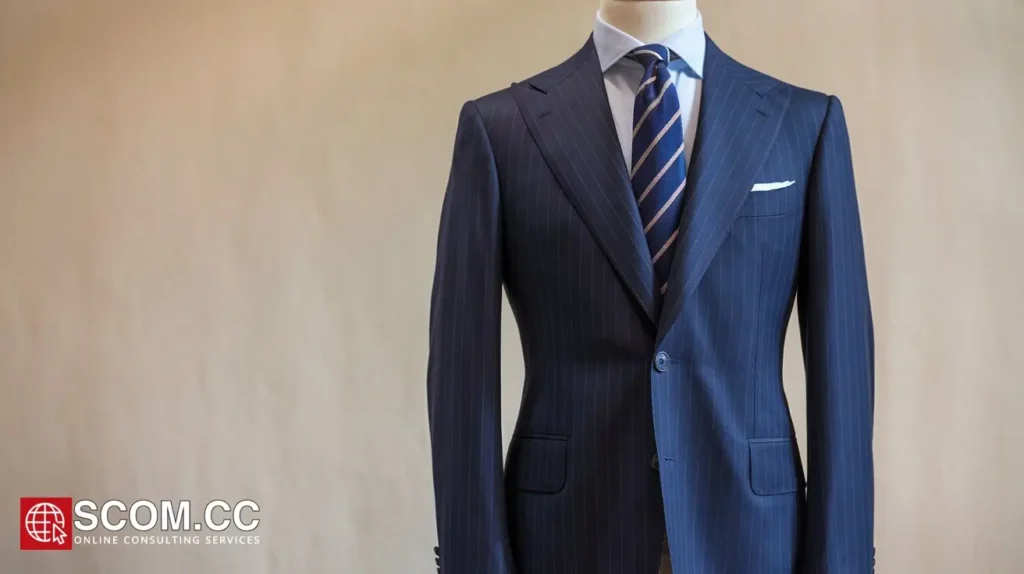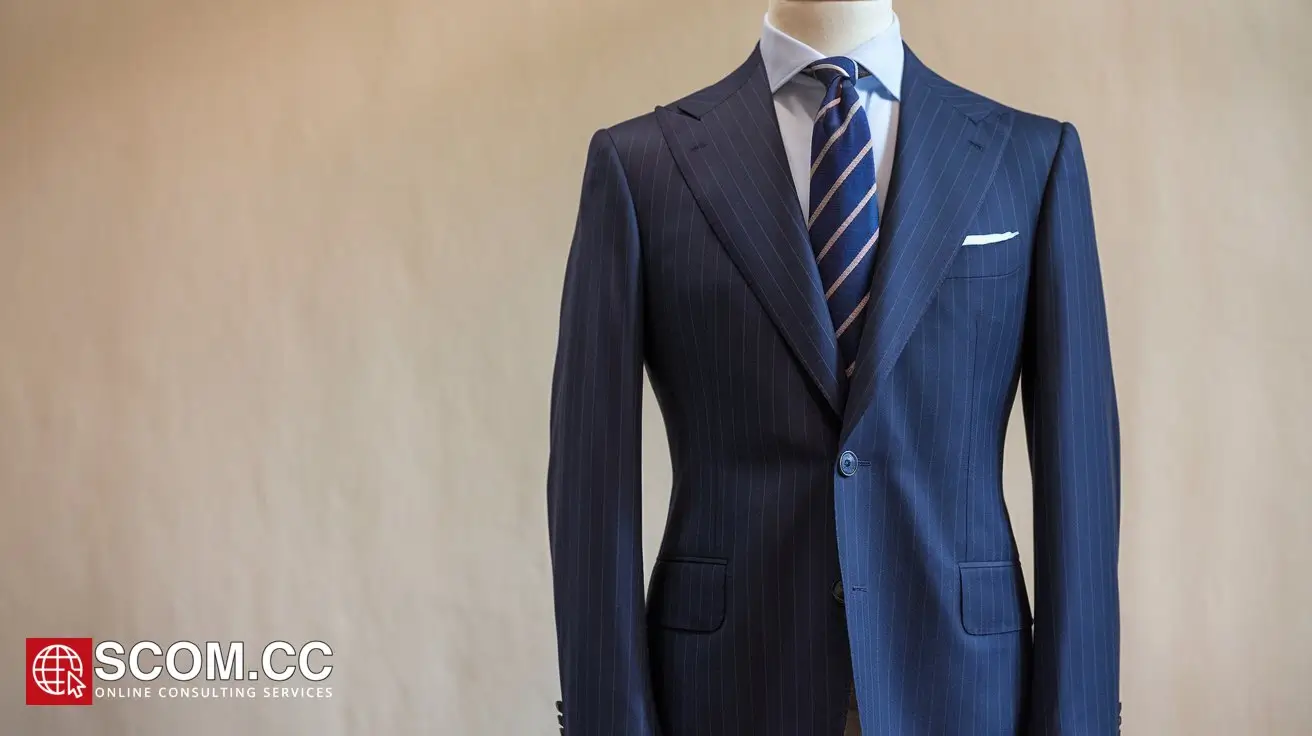The Importance of Suit Lining and What to Look For

- The Importance of Suit Lining and What to Look For
- Why Suit Lining Matters
- What to Look for in Suit Lining
- Conclusion
-
FAQ
- 1. Why is suit lining important?
- 2. What materials are commonly used for suit linings?
- 3. What is the difference between full lining and half lining?
- 4. How can I tell if a suit has high-quality lining?
- 5. Can I choose the color or pattern of the suit lining?
- 6. How should I care for my suit lining?
- 7. What are the benefits of hand-stitched versus machine-stitched lining?
The Importance of Suit Lining and What to Look For
When choosing a suit, the lining might not be the first feature that comes to mind, but it plays a crucial role in both the functionality and aesthetics of the garment. Suit lining not only affects how comfortable the suit feels but also influences its overall durability and appearance. This comprehensive guide explores the importance of suit lining and what to look for to ensure you select a suit that meets your standards.
Why Suit Lining Matters
1. Enhances Comfort and Fit
The primary function of suit lining is to enhance the comfort of the suit. A well-constructed lining:
- Reduces Friction: Lining provides a smooth surface inside the suit, reducing friction between the suit fabric and your skin, making it easier to put on and take off the suit.
- Improves Fit: It helps the suit drape better on your body by adding structure and stability, contributing to a cleaner, more tailored look.
2. Increases Durability
High-quality lining adds an extra layer of protection to the suit’s exterior fabric:
- Protects Fabric: Lining helps prevent the outer fabric from wearing out too quickly, especially in areas that experience more stress, such as the shoulders and elbows.
- Resists Stretching: It maintains the suit's shape by preventing the outer fabric from stretching and losing its form over time.
3. Enhances Suit Shape and Structure
Lining contributes to the overall shape and structure of the suit:
- Provides Structure: It supports the suit’s structure, helping the jacket maintain its shape and ensuring that it drapes properly over your body.
- Facilitates Tailoring: A good lining allows for easier alterations, ensuring that adjustments made by a tailor fit seamlessly with the suit’s design.
4. Adds a Touch of Luxury
Lining can also enhance the suit’s visual appeal:
- Aesthetic Appeal: Many linings feature stylish patterns or colors that add a subtle touch of luxury and sophistication to the suit.
- Personalization: High-end suits often have custom linings that reflect the wearer’s personal style or the suit’s brand identity.
What to Look for in Suit Lining
1. Material Quality
The material of the lining significantly impacts the suit’s overall comfort and durability:
- Silk: Silk linings are luxurious, breathable, and smooth, offering a high-end feel and exceptional comfort. They are, however, more delicate and may be more expensive.
- Satin: Satin linings, often made from polyester or nylon, provide a glossy finish and smooth feel. They are durable and less expensive than silk, making them a popular choice for many suits.
- Viscose: Viscose linings are soft, breathable, and have a similar feel to silk but at a more affordable price. They offer good comfort and durability.
- Polyester: Polyester linings are durable and resistant to wrinkles and moisture. They are often used in more affordable suits and offer good functionality but may not have the same luxury feel as silk or satin.
2. Construction and Design
The construction and design of the lining affect the suit’s overall quality:
- Full Lining: A suit with full lining is lined from top to bottom, providing a consistent feel and additional protection for the suit’s outer fabric. It is generally more durable and comfortable.
- Half Lining: Half-lined suits have lining only in the upper part of the jacket, which can be beneficial in warmer climates. It offers a lighter feel and more breathability but may not provide the same level of protection and structure as full lining.
- Bemberg: Bemberg is a high-quality rayon lining that is breathable and moisture-wicking. It is often found in high-end suits and adds a luxurious touch.
3. Stitching and Finishing
Attention to stitching and finishing details reflects the overall quality of the suit:
- Hand-Stitched: High-end suits often feature hand-stitched linings, which ensure durability and add a touch of craftsmanship. Hand-stitching also allows for more flexibility in tailoring.
- Machine-Stitched: While more affordable, machine-stitched linings can still offer good quality if done well. Ensure that the stitching is even and secure to avoid potential issues.
4. Color and Pattern
The color and pattern of the lining can add a personal touch to your suit:
- Classic Colors: Neutral colors like black, navy, or gray are versatile and complement most outer fabrics.
- Patterns: Patterns such as paisley, stripes, or polka dots can add a unique element to the suit, enhancing its individuality without being overly flashy.
5. Maintenance and Care
Proper care of the lining ensures the longevity of the suit:
- Cleaning: Follow the care instructions for cleaning and maintenance. Generally, dry cleaning is recommended to preserve the quality of both the lining and the outer fabric.
- Storage: Store the suit in a breathable garment bag and use a wooden hanger to maintain the shape of the lining and outer fabric.
Conclusion
The lining of a suit plays a crucial role in its comfort, durability, and overall quality. By paying attention to the material, construction, stitching, and design of the lining, you can ensure that your suit not only looks great but also stands the test of time. Choosing a suit with a well-made lining is an investment in both style and longevity, ensuring that you look and feel your best on any occasion.
Summary Table: The Importance of Suit Lining and What to Look For
| Aspect | Details |
|---|---|
| Why Suit Lining Matters | Enhances comfort and fit, increases durability, improves suit shape and structure, adds luxury. |
| Material Quality | - Silk: Luxurious, breathable, smooth. - Satin: Glossy finish, durable, less expensive. - Viscose: Soft, affordable, good comfort. - Polyester: Durable, wrinkle-resistant, budget-friendly. |
| Construction and Design | - Full Lining: Consistent feel, additional protection. - Half Lining: Lighter, more breathable, suitable for warm climates. - Bemberg: High-quality rayon, breathable, luxurious. |
| Stitching and Finishing | - Hand-Stitched: Durable, craftsmanship, flexibility. - Machine-Stitched: Affordable, check for even stitching. |
| Color and Pattern | - Classic Colors: Black, navy, gray. - Patterns: Paisley, stripes, polka dots for unique touch. |
| Maintenance and Care | - Cleaning: Dry cleaning recommended. - Storage: Use breathable garment bags, wooden hangers. |
FAQ
1. Why is suit lining important?
Suit lining enhances comfort by reducing friction between the suit fabric and your skin, increases durability by protecting the outer fabric, improves the overall fit and structure of the suit, and adds a touch of luxury and sophistication.
2. What materials are commonly used for suit linings?
Common materials include silk for its luxury and breathability, satin for its glossy finish and durability, viscose for a soft and affordable alternative, and polyester for its durability and wrinkle resistance.
3. What is the difference between full lining and half lining?
A full lining covers the entire interior of the suit, providing consistent comfort and protection. A half lining covers only the upper part of the jacket, offering a lighter feel and increased breathability, making it suitable for warmer climates.
4. How can I tell if a suit has high-quality lining?
High-quality lining is often made from luxurious materials like silk or Bemberg and features meticulous hand-stitching. Check for smooth, even stitching and sturdy construction. The lining should also align well with the suit’s outer fabric without any puckering or loose areas.
5. Can I choose the color or pattern of the suit lining?
Yes, many suits offer customization options for lining color and pattern. Classic colors like black or navy are versatile, while patterns such as paisley or stripes can add a personalized touch to your suit.
6. How should I care for my suit lining?
To care for suit lining, follow the cleaning instructions on the label, typically dry cleaning. Store the suit in a breathable garment bag and use a wooden hanger to maintain its shape and avoid damage to the lining.
7. What are the benefits of hand-stitched versus machine-stitched lining?
Hand-stitched lining generally offers better durability and craftsmanship, allowing for more precise adjustments and a higher level of detail. Machine-stitched linings are more affordable but ensure that stitching is even and secure to maintain quality.

To explore more about tailoring, visit our Blog of Tailoring. If you have any questions or need assistance, go to our contact page. Additionally, you can find more information about tailoring and consulting at this tailoring and consulting portal.

Leave a Reply